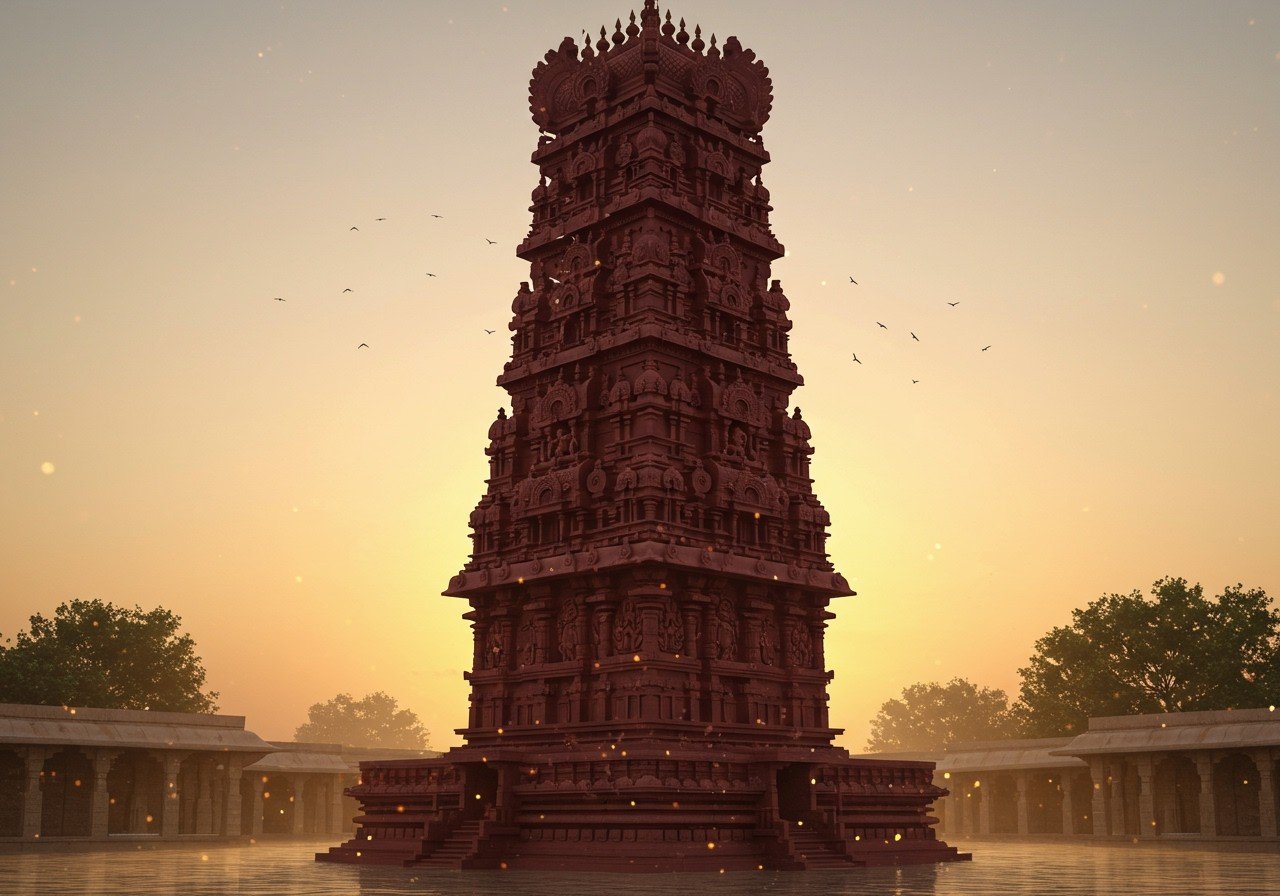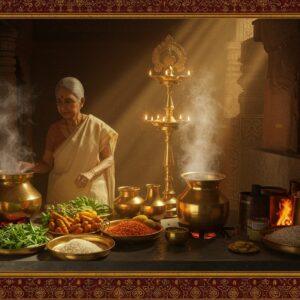
In the heart of many Hindu temples, especially across South India and Sri Lanka, stands a magnificent structure known as the Dwajasthambam, Kodimaram, or Dhwaja Stambh. It’s not merely a tall pillar but a powerful symbol of our rich spiritual heritage and cultural depth. Nestled between the Gopuram (entrance tower) and the Maha Mandapa (main hall), the Dwajasthambam serves as a sacred beacon, guiding devotees towards a deeper connection with the divine.
Construction and Symbolism: A Fusion of Art and Spirituality
The Dwajasthambam is a testament to the exquisite craftsmanship and deep symbolism inherent in Hindu temple architecture. Its form can vary, taking on round, square, hexagonal, or octagonal shapes, each imbued with its own unique beauty. Often, three horizontal perches, called Mekhala or Mekalai, grace its top, pointing reverently towards the Garbhagriha (sanctum sanctorum). These perches may be adorned with delicate bells, their gentle ringing echoing the divine presence. In some temples, you’ll find a single perch or perhaps a platform for a sacred earthen lamp (deepam) crowning the structure.
Crafted from sturdy wood like teak or enduring stone, particularly in regions like Telangana and Karnataka, the Dwajasthambam stands tall and proud. Often, its surface is embellished with sheets of copper, silver, or gold, enhancing its splendor. The base, resting on a large square platform, often features intricate lotus petal designs. Deities might be sculpted on the four sides near the base, adding to the spiritual richness of the structure.
The height of the Dwajasthambam holds symbolic importance. Tradition dictates that it should ideally equal the height of the Sikara (tower above the sanctum). This careful measurement ensures a respectful distance from the Garbhagriha, should the Dwajasthambam ever fall.
A Symbol of Hope and Connection
The word “Dhwaja” in Sanskrit and “Kodi” in Tamil both mean “flag,” emphasizing the Dwajasthambam’s role as a flagstaff. More profoundly, it represents a spiritual conduit between heaven and earth, connecting the divine with the earthly realm. It embodies hope, inspiring devotees to overcome ignorance and draw closer to the divine presence.
Some Agamas, ancient Hindu scriptures, liken the Dwajasthambam to the human spinal cord, with 32 rings symbolizing the 32 spiral bones. The three perches often seen at the top can represent the Trimurti – Brahma, Vishnu, and Shiva. In Shiva temples, a Trishul (trident) or a Nandi statue might adorn the top. In Vaishnavite temples, you might find a Sudarshana Chakra or a Hanuman figure. It is believed to receive cosmic energy, channeling it into the temple for the benefit of all who enter.
The flag hoisted atop the Dwajasthambam serves as a protective shield against negative forces and symbolizes the deity’s sovereignty. It’s a visual reminder of the divine presence that permeates the temple grounds.
Honoring Tradition: Rituals and Practices
Before entering the temple, devotees often pay their respects to the Dwajasthambam, acknowledging its spiritual significance. During temple festivals (Utsavas), the Dwajasthambam takes center stage, becoming an integral part of the celebrations. In temples that follow the Shodasopachara puja (sixteen-step worship), offerings are made to the Dwajasthambam along with the main deity, highlighting its importance in ritualistic practices.
Poojn.in: Your Guide to Authentic Ritual Items
Looking to bring the sanctity of the temple into your home? At poojn.in India’s leading online store for puja items and cultural goods, we offer a wide selection of authentic products to enhance your spiritual practices. Whether you need exquisite statues, incense holders, or holy utensils, poojn.in provides everything you need to create a sacred space in your home. Browse our collection today and experience the convenience of online shopping with the assurance of quality and authenticity.
Visualizing the Divine: Images and Drawings
To truly appreciate the architectural beauty and spiritual depth of the Dwajasthambam, exploring images and drawings can be incredibly enriching. A simple online search for “Dwajasthambam images” opens a world of visual delight, showcasing the intricate details and variations in design. You can find stock photos, illustrations, and even artistic representations that capture the essence of this sacred structure. For a deeper dive into Hindu temple architecture, consider exploring our articles on Hindu Architectural Styles and Hindu Sacred Architecture.
Embracing Tradition in the Digital Age
In today’s fast-paced world, where technology connects us in unprecedented ways, it’s even more vital to cherish and preserve our ancient traditions. Online platforms like poojn.in offer convenient access to information and resources, allowing us to learn about and appreciate the rich cultural heritage of structures like the Dwajasthambam. Whether you are a seasoned devotee or simply curious about Hindu temple architecture, the Dwajasthambam offers a glimpse into the profound spiritual connection at the heart of our traditions. Let this guide be a starting point for your journey of discovery and a reminder of the timeless wisdom that continues to guide us.


